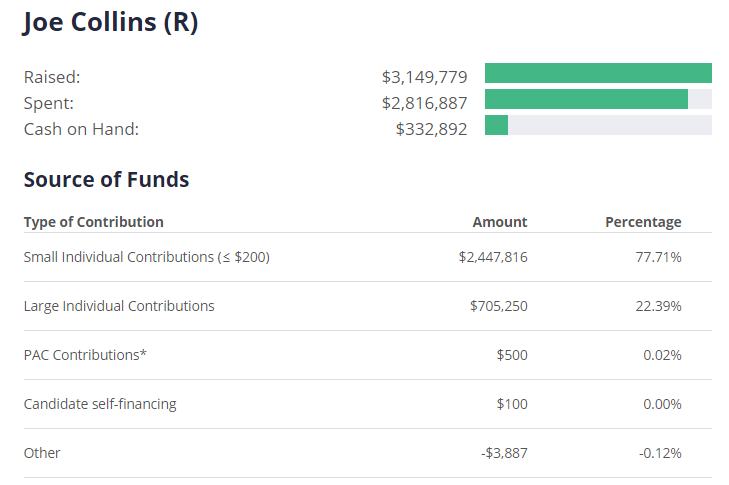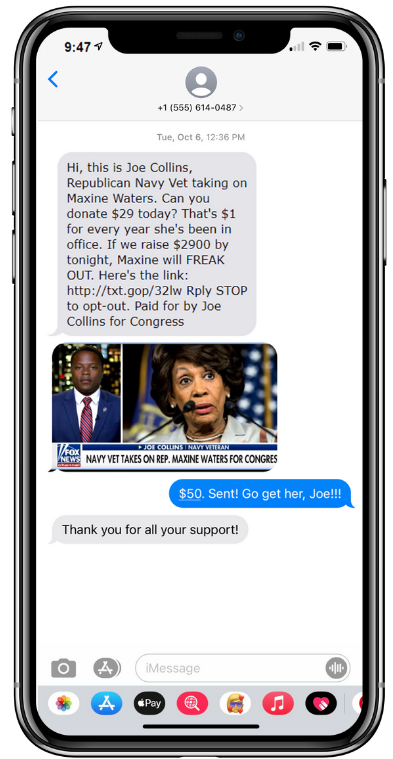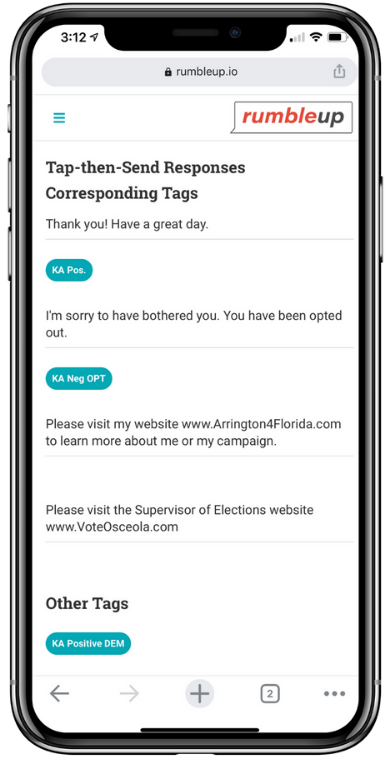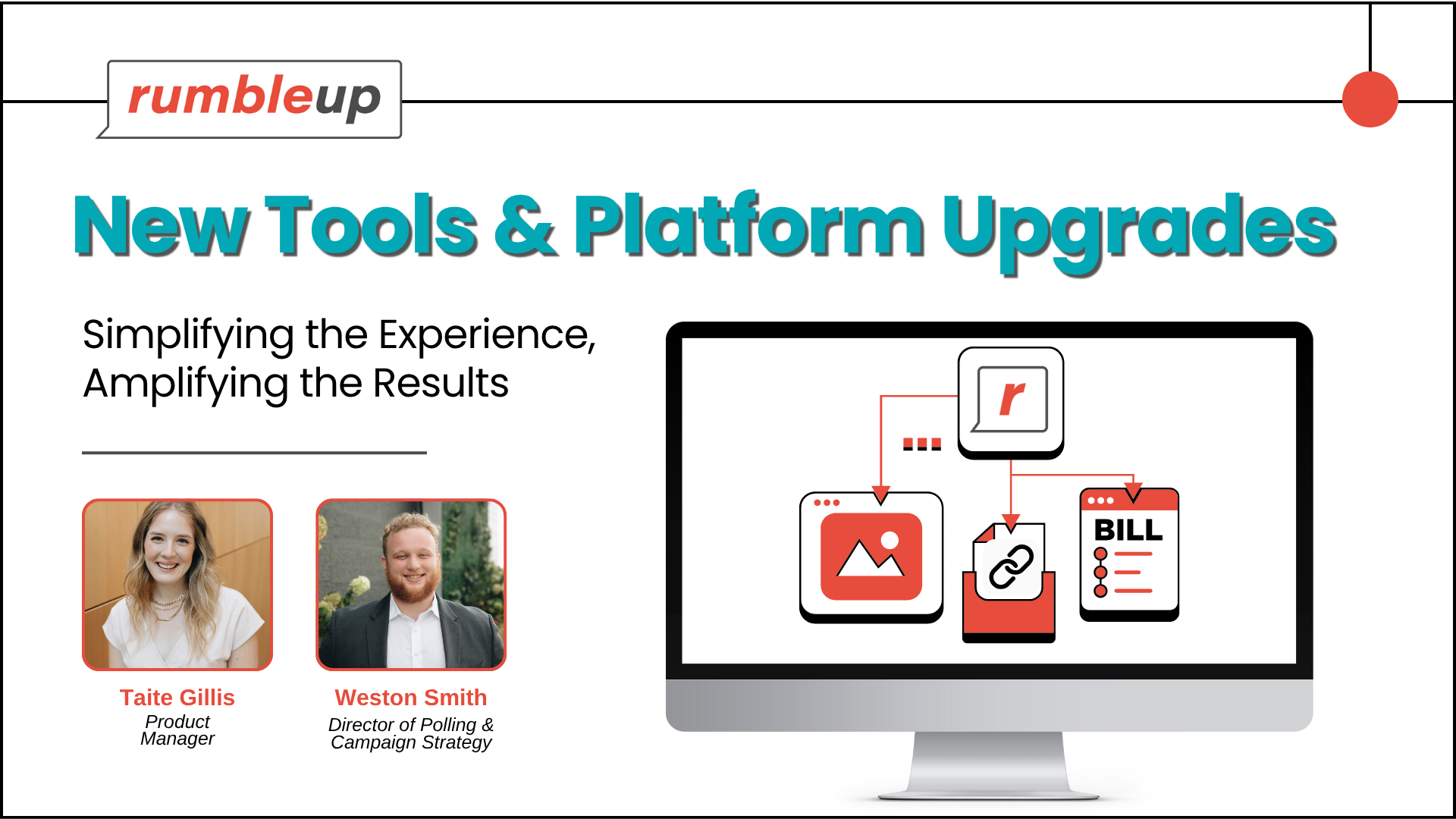
Replying to your supporters when they donate to you is a surefire way to increase the chance of repeat supporting with donations in the future.
As the countdown ticks closer to November 3rd, there have never been more voters engaged in the election process. The upcoming elections are on everyone’s mind as the entire country buzzes around watching debates, submitting mail-in ballots, standing in line at the polls, and getting involved with campaigns by volunteering or donating.
Although many people have cut back their spending due to COVID-related financial strain, nearly 20% of Americans are still planning to donate to a 2020 presidential candidate according to a CNBC and Acorns Invest in You Spending Survey.
While the survey cautions that the actual number of individuals who follow through in donating will likely be half of that, at RumbleUp we are seeing firsthand how profitable a text message can be as our clients are successfully collecting generous donations from their energized base.
One notably successful fundraising story comes from our client, congressional candidate Joe Collins, who is taking on incumbent Maxine Waters for California’s 43rd District.

By the end of June, Collins’ campaign had raised over three million dollars, with over 75% coming from small individual contributions of less than $200. They were able to reach these small-dollar donors by texting them directly, which they were able to do at scale through our platform. A well-written message sent to a modeled audience is a sure-fire path to success, and that is exactly what the Collins campaign did.
In this screenshot showing a real conversation between Collins’ campaign and a supporter, you can see how his team followed the best practice of replying to people who responded to their initial message. This practice has been proven to help achieve higher engagement and retention.
RumbleUp recently introduced a new feature that enables in-browser notifications to appear whenever a new reply comes in. Faster responses correlate with higher ROI and more conversions per text.

Here are some more best practices Collins’ campaign followed that contributed to their success:
- Adding call-to-action aids in their message by providing suggestions for the dollar amount to donate. This makes it easier for recipients to make the decision to donate by eliminating some of the guessing around how much they should give.
- Including a deadline which adds urgency
- Using a custom shortened link (created in the portal) directing supporters to a donation page. Using custom links instead of free or public link shorteners like bit.ly helps prevent phone carriers from marking messages as spam.
- Having the message come from the candidate themself is an excellent way to humanize them and boost name recognition.
- Including an MMS attachment featuring the candidate and his opponent on a major news network. Sending images along with the text has been proven to increase response rates by 50% on average and improve click-through rates.
While all of these best practices played a role in the above-average performance of their program, the key to their success came down to one basic element. The Collin’s team did something that a surprising number of campaigns fail to do by utilizing the main feature of P2P texting: back-and-forth communication.
What separates P2P from blast-messaging services is the ability to have one-to-one, personalized conversations with voters. When a voter responded to a message from the campaign, whether they offered money or just wishes of good luck, Collins’ team sent a message back thanking them for the support! This simple act of responding is often overlooked as many campaigns only focus on the outbound messages they send without paying much mind to the responses they get back.
Collins’ team sent out a variety of different fundraising messages in conjunction with several other engagement messages. Fundraising campaigns don’t have to be small. We’ve seen successful fundraising messages sent to hundreds of thousands and millions of people while still achieving an average open rate of 95%.
The Collins campaign chose to raise money via P2P texting because traditional fundraising methods alone just don’t cut it anymore. Several reasons for this include:
- In-person fundraising events such as banquets and rallies have mostly been canceled this election cycle due to COVID-19 concerns.
- Telephone fundraising is not viable anymore, as Americans send more than 50% of phone calls to voicemail even if it is from a number they recognize as many people have developed anxiety to answering unexpected calls, even considering it rude. The number jumps to 76% sent to voicemail coming from an unrecognized or unknown number.
- The average open rate of political emails is 22.94% with only a 2.37% click-through rate according to MailChimp statistics, which is significantly lower than the open rate of text messages (see below).
- The average acquisition of direct fundraising mail response rate is less than 1%, with some organizations reporting spending an average of $1-$1.25 for every dollar raised on direct mail fundraising campaigns in the United States.
P2P texting provides communication on the channel where people respond the most often and care about the most: over 90% of texts are read within the first 3 minutes with an average total open rate of 95%. This means that even if voters do not respond right away, you can rest assured that your message was at least seen and read. The response rate of texting also significantly outperforms traditional channels with the industry average ranging from 10–20%, which is almost 10x higher engagement than email and 20x higher engagement than direct mail.
Is your campaign following best practices?
Many campaigns use P2P texting primarily to send outbound messages and miss out on the power of responding. Taking the time to treat texting conversations the same way you would a face-to-face conversation with a constituent is the key to making a lasting positive impact with your audience.

The best way to fully capitalize on the information people share through their responses is by utilizing RumbleUp’s customizable tagging feature. By simply establishing a few categories you would like to keep track of, volunteers can quickly tap to select any that apply to a person they are texting with so that you can filter to pull targeted lists later on. This feature can be helpful in growing your contacts list, identifying new supporters, and creating new audiences by segmenting people into different groups.
Collins’ team utilized our flexible tagging feature to identify positive responses from previous outreach messages and segment those contacts into a list of prospective donors. Tagging the voters who replied also allowed the campaigns’ texting agents to easily revisit specific message chains that needed follow-up so no one was ever left unresponded to.
This smart use of tagging demonstrates two other important best practices, which are avoiding cold messaging when sending fundraising texts and responding to those who respond.
Establishing who you are in messages before asking a voter for their time and money can significantly increase their willingness to give it to you if it is not the first time they have ever heard from you. This can be done by sending out more than just fundraising messages — sending messages to introduce yourself, recognizing a national holiday or a supporter’s birthday, providing helpful local voting information and other great GOTV messages are all great options to start with.
Similarly, campaigns that leave positive respondents hanging miss out on a perfect opportunity to turn supporters into super-supporters, and guarantee the campaign can count on them the next time they reach out.
In Conclusion
P2P texting can be an incredibly effective tool for fundraising, and RumbleUp makes it easy to do. As seen with the Collins campaign, pairing a well-written message with a targeted audience and consistently responding to people is a recipe for success. Their team took full advantage of the feature set our platform offers and it served them well.
Achieving genuine communication with voters and supporters at scale to help you complete your campaign’s fundraising goals is still possible amidst the unique challenges brought about by COVID-19.
Please reach out to our sales team at sales@rumbleup.com if you want to learn more or sign up and start texting in less than 15 minutes at RumbleUp.com.

![i360 vs. RumbleUp Which platform is best for your campaign [2025]](https://rumbleup.com/hubfs/i360%20vs.%20RumbleUp%20Which%20platform%20is%20best%20for%20your%20campaign%20%5B2025%5D.png)
![Hustle vs. RumbleUp Which Peer-to-Peer Texting Platform is Right for You [2025]](https://rumbleup.com/hubfs/Hustle%20vs.%20RumbleUp%20Which%20Peer-to-Peer%20Texting%20Platform%20is%20Right%20for%20You%202025.png)